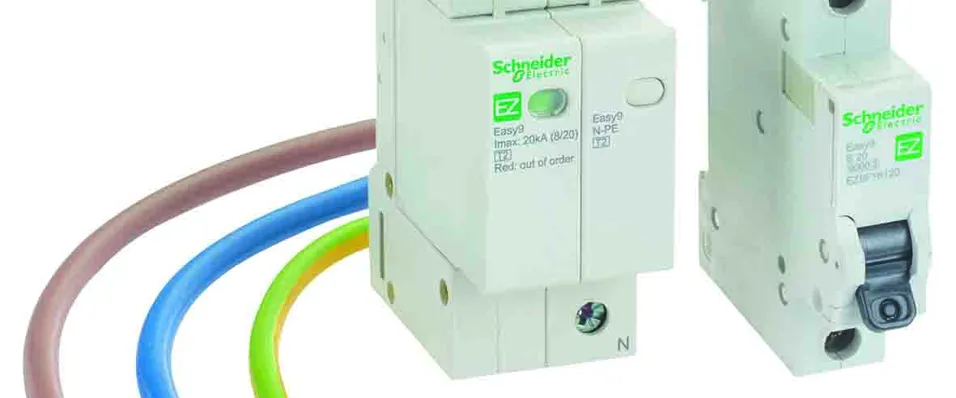
Sponsored: Surge Protection - what you need to know
Virtually every building in the UK, regardless of use, will contain electrical devices and equipment, which are central to everyday living and convenience. However, transient over-voltages, also known as power surges, can seriously damage these pieces of equipment. Damaged equipment not only incurs the expense of repair or replacement but also further, long term costs such as lost data if storage devices are damaged.
New Requirements
The Institution of Engineering and Technology (IET) Wiring Regulations (BS 7671) has updated its guidance on surge protection devices (SPD) in successive editions. Current 18th Edition, released in July 2018 and applicable from January 2019, outlined revised guidance advice for contractors, and new criteria for where these devices should be installed.
This includes a simplified assessment for when SPDs are required, stating that:
“Protection against transient over-voltages shall be provided where the consequence caused by over-voltage:
- Results in serious injury to, or loss of, human life or
- Results in interruption of public services and/or damage to cultural heritage or
- Results in interruption of commercial or industrial activity, or
- Affects a large number of co-located individuals.”
Additionally, any commercial, industrial, or public building that is supplied by overhead lines requires surge protection – so the majority of buildings will require surge protection. Residential properties will depend on use and occupancy levels.
For non-residential properties that do not fit into these categories, a risk assessment must be carried out, a process that has also been simplified in the 18th edition, detailed in section 443.4 of the IET Wiring Regulations. Where this risk assessment is not conducted, the regulations require that surge protection is implemented.
Types of Surge Protection
All SPDs work by diverting surge currents to earth to reduce the over-voltage to a level that will not damage the components of the system or equipment connected to it. There are three types of surge protection devices:
Type 1
A Type 1 SPD is designed to provide protection against surges caused by direct lightning strikes. These often feature spark gap technology, which can handle very high voltages by creating a short to ground when a level of current is reached.
Type 2
A Type 2 device offers protection against over-voltages from switching and indirect lightning strikes. This type more commonly uses a metal oxide varistor (MOV) to divert the current away.
Type 3
Type 3 SPDs provide local protection for sensitive equipment. As these have a relatively low discharge capacity, they should always be installed in addition to a Type 1 or 2 device.
Knowing the right type of device to install is essential to protect equipment in all types of buildings, as is reflected in the evolving guidance.
For more information on surge protection and other regulations, please visit www.electricaldirect.co.uk/blog

